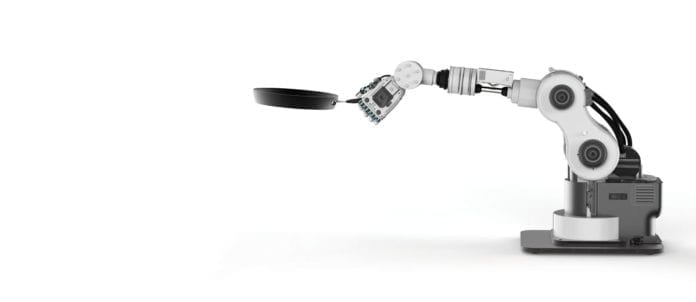Led by esteemed technology leaders such as Elon Musk, there’s growing talk about the technological singularity — the day robots become sentient and take over the world. Any fan of the Terminator movies knows how that ends.
Such a notion might seem far-fetched but, funded by deep-pocketed investors, AI-led inventions are spreading through the foodservice industry, providing solutions for everything from reservations and ordering to pick-up and payment — even, in some cases, food preparation.
They range from chatbots capable of taking your pizza order using nothing more than an emoji, to an AI-powered short-order cook and a Rube Goldberg-esque contraption capable of producing gourmet-quality hamburgers.
But Julie Smithson, CEO of MetaVRse, a Toronto-based virtual-, augmented- and mixed-reality (XR) firm, says adoption of AI-led foodservice products — particularly those that come in direct contact with food — will be slow. “It will take a lot to replace frontline workers,” she says. “When it comes to food and beverage, a chef is still going to be something people want to have.”
Smithson predicts augmented-reality (AR) menus will be among the first tech-led innovations to find a home in the foodservice industry. “They have to start somewhere and this is the year,” she says. AR technology already has a built-in user base, she adds, with nearly two billion equipped devices already in people’s pockets.
Debuting in April, MetaVRse’s AR platform, PrintXR, is among the technologies capable of making menus pop, producing a 3D-rendering of food items that can be manipulated through its device or equipped VR tech. The menus will be capable of showing customers how their order will look, even if the food is personalized.
One of the most notable examples of the increasing power of AI is chatbots, which can facilitate conversations between consumers and brands with zero human interaction. Always an early and enthusiastic adopter of technology, Domino’s introduced its chatbot, “Dom,” in 2016. It enables customers to order from the full Dominos menu without leaving Facebook Messenger, while users who have created a Domino’s Pizza Profile and inputted a favourite order, can order by simply typing a pizza emoji. However, the chain doesn’t offer Facebook ordering in Canada just yet.
AI-led innovations are also transforming some of the most mundane and dangerous aspects of foodservice. In 2017, the Pasadena, Calif.-based tech company, Miso Robotics, introduced Flippy, an AI-driven robot that acts like short-order cook.
Flippy can not only cook perfectly and consistently, but Miso claims it’s capable of 100,000 straight hours of uptime (let’s see your short-order cook do that), can work collaboratively with kitchen staff and has the ability to automatically switch between cooking and cleaning.
In January, Miso announced that Flippy is now capable of performing frying tasks, following a successful pilot program at Dodger Stadium’s Chick ‘n Tots stand, in which it helped produce up to 80 baskets of food per hour. According to Miso CEO David Zito, Flippy’s technology enables it to pick up baskets and place them in the fryer, gently shake them in the oil, while monitoring cooking time and hanging baskets to drain excess oil.
While Forbes magazine says Canada is poised to win the AI battle because of its deep talent pool, openness to collaboration and an abundance of data that reflects its diversity, operators are still mostly on the sidelines when it comes to these sorts of AI-led innovations.
Experts attribute it to a combination of our inherently conservative nature, coupled with the type of slender profit margins that can make an investment in unproven technology feel like a huge gamble. While acknowledging that “there’s not a lot going on” at the moment, Smithson says she’s encouraged by a responsive attitude towards AI-led innovation.
Canadians may be in retreat when it comes to these tech advancements, but history in other business sectors suggest they’ll be back.
Written by Chris Powell


















